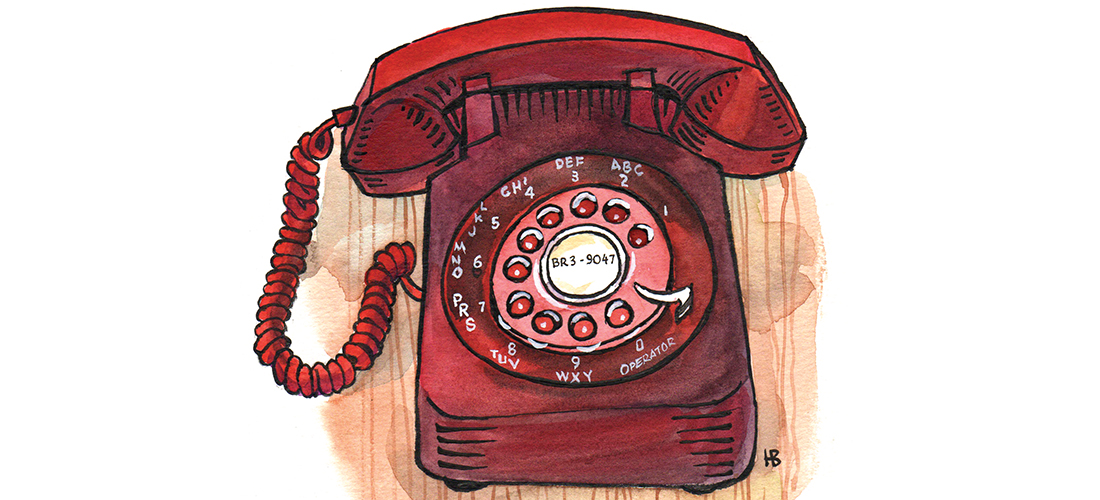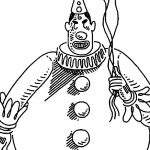
Telephones have come a long way — even if our politics and sense of civility haven’t
By Clyde Edgerton
A red rotary phone recently ended up in our house. It had been used in an elementary school talent show. Some of you remember the pre-push button, dial telephone once in many homes. The phone itself, about the size of a brick, but a little taller, usually sat on a table or shelf and was plugged into the wall via a cord. My 13 -year-old son wondered if people used to walk around holding them when they talked — receiver in one hand, phone in the other. I said that early on the cord wasn’t long enough and then later very long cords became fashionable and people could walk around with them if they liked. A phone was about the weight of a laptop, but with significantly fewer functions.
For younger folks: On the front of the phone is a round disc — about the size of a CD (remember those?) with 10 holes in a circle — counting counter-clockwise. Inside each hole is a number, 1 – 9, and then the final number, 0.
A phone number is dialed, one number at a time, by sticking your finger into the correct hole on the dial and pulling around one number at a time until it reaches a little metal stop. The 1 is nearest the stop. Our number in Durham County, North Carolina, when I was a child, was 6-4558.
As I write, I realize that perhaps the 0 should have preceded the 1 rather than follow the 9. That’s off-topic, though.
But to continue off-topic: Back then when you called the operator to say the number of (and ask her to place) a long distance call, you had to dial 0 to get the operator — meaning the dial had to be cranked from the 0 spot all the way around to the stop and then released. The 0 took longer to finish dialing than any other number. An enormous amount of time was wasted over several decades while people waited for the 0 to finish dialing.
Sorry, I just did the math: Every billion long distance calls collectively wasted about 30 years.
The phone had a receiver which rested atop the phone. The receiver, about the size of a banana (actually a sender/receiver because you talked into one end and listened from the other), while resting on the phone, pressed down two buttons which did not work independently. When you pressed one button, they both went down. When you lifted the receiver from its cradle, the buttons came up together and the line was open for you to make a call. There was a dial tone that I’m sure I can’t describe to one who’s not heard it. To one who has: You are probably hearing it in your head now.
While explaining things to my son, I remembered this:
In the early 1950s, our phone was on a party line, shared with seven or eight households, not a private line; and there was a skillful way to secretly listen in on neighbors’ phone conversations. I probably learned the technique from watching my mother, though I can’t be sure.
Usually, if you were talking along and somebody on your party line lifted their receiver off their phone, you would hear a click and then you could hear breathing or whatever was going on in their house, and then they’d hang up since the line was in use. If they continued listening, you could say, “Sorry, I’m using the line.”
But if you wanted to listen in on another conversation, you lifted only one end of the receiver and pressed the exposed button (so that both buttons stayed down), and then kept holding them down as you lifted the receiver to your ear. Next, you slowly lifted the button that was depressed, stopping just before the click. Then you heard the talkers, but they couldn’t tell you were listening in. If you lifted that button too high, a click would sound and your presence would be known. Of course, you couldn’t do something like this in our day and age as you might get banned from the county park system or the courthouse or county school grounds by vigilant officials.
Thinking back on all this led me to what may be a naive realization:
Let’s assume we are in the 1950s and that today’s political climate exists: many people despising fellow citizens because of “political beliefs.”
Let’s assume further that because of your new neighbor’s bumper sticker, you’ve never spoken to her/him. But, you happen to overhear a phone conversation that neighbor is having with a friend on a neighborhood party line.
You hear no political talk, but you learn that your neighbor likes dark roast coffee like you do. I mean, really likes it. His mother has dementia, like your mother. He likes Dr. John’s music, like you do.
When you next see that neighbor in person, the chance for friendship is greater than before. The possibility of being civil, of seeing beyond the spirit of bumper-sticker-like cable news, of showing some Southern hospitality — is not so far-flung. PS
Clyde Edgerton is the author of 10 novels, a memoir and a new work, Papadaddy’s Book for New Fathers. He is the Thomas S. Kenan III Distinguished Professor of Creative Writing at UNCW.


